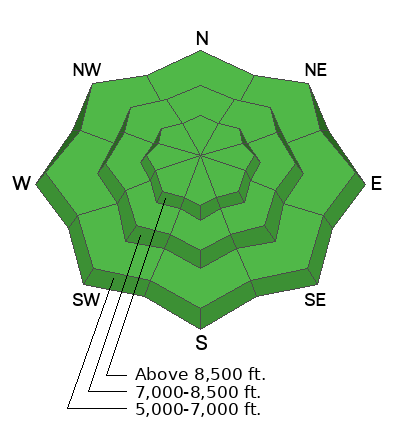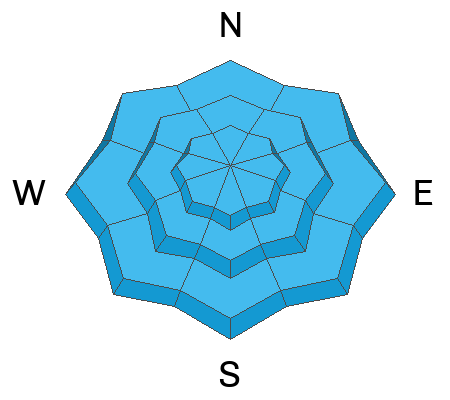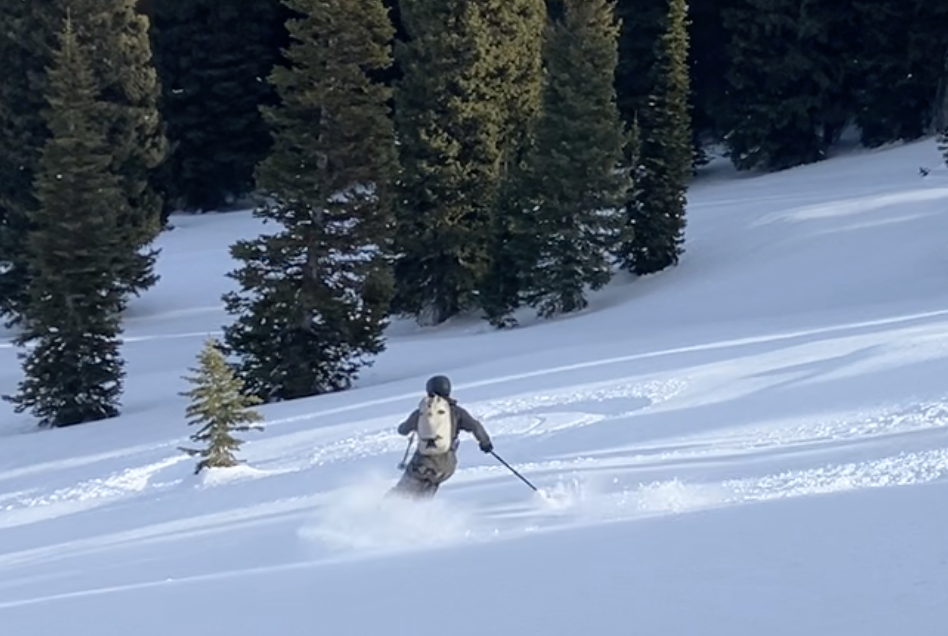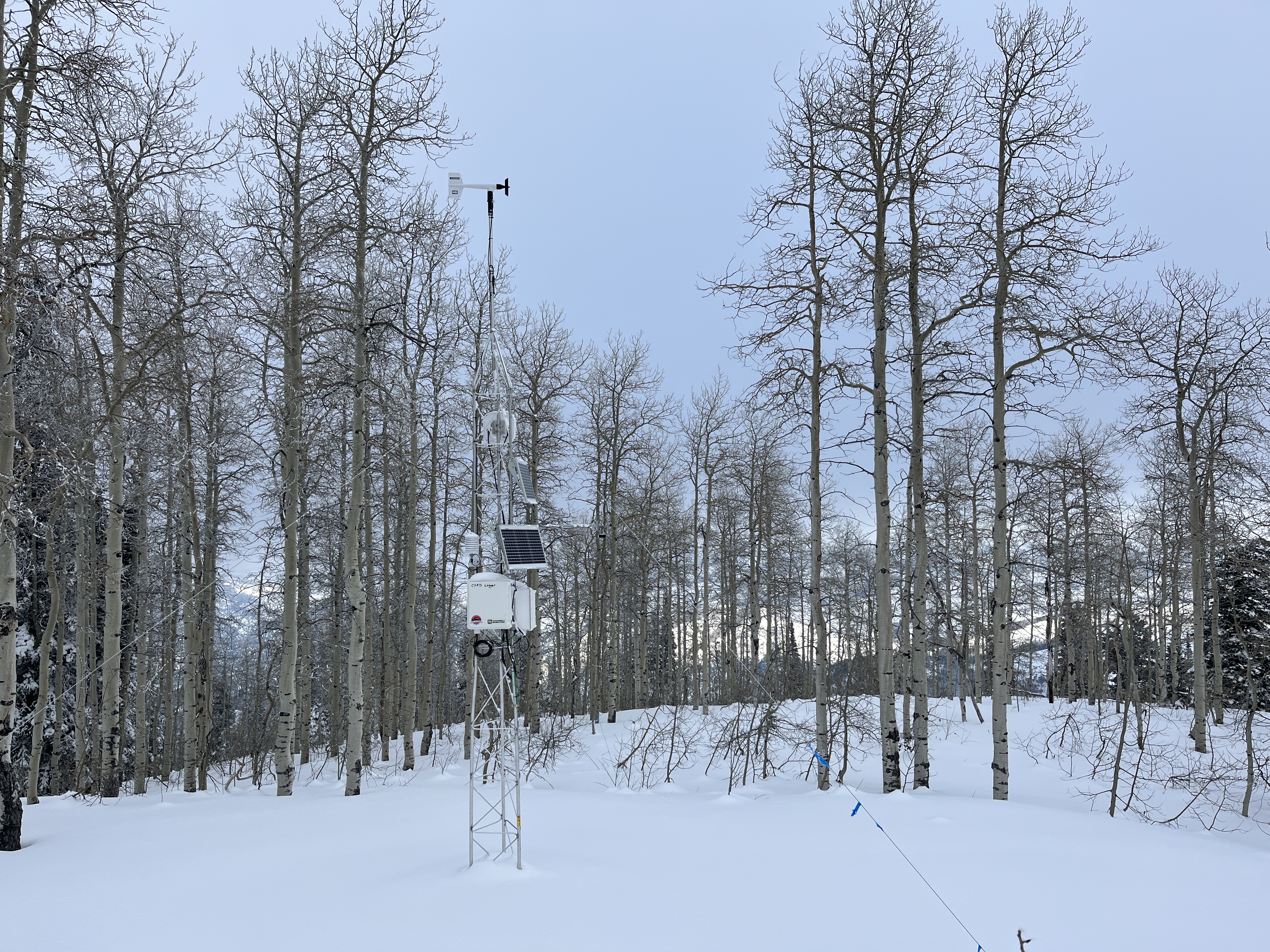The Tony Grove Snotel at 8400' reports 42 inches of total snow, with overnight temperatures again around freezing. The CSI Logan Peak weather station at 9700' reports 27° F and 15 mph winds blowing from the south-southwest. Temperatures are hovering around 30°F at the new Card Canyon weather station with 32" of total snow on the ground.
Today will be partly sunny and mild in the mountains, with high temperatures around 35°F at 8500'. Snow is likely this weekend, with 1 to 3 inches of accumulation possible in the mountains tomorrow.
We found stable snow and decent snow conditions in the Central Bear River Range yesterday. The recent warmth and cloud cover damaged the feathery
surface hoar, and thin crusts cap moist sugary surface snow (consisting of
near-surface facets). A few inches of snow that is possible this weekend will do a lot to freshen things up, while it will take quite a bit more than expected to increase the avalanche danger.
No recent avalanches were reported in the Logan Zone. Snow safety crews yesterday triggered a couple of impressive avalanches that ran on the sugary November persistent weak layer near the ground with explosives and a snowcat in Summit County.
- Local observations are available HERE.
- Visit our avalanche page to check out this season’s activity across Utah.











